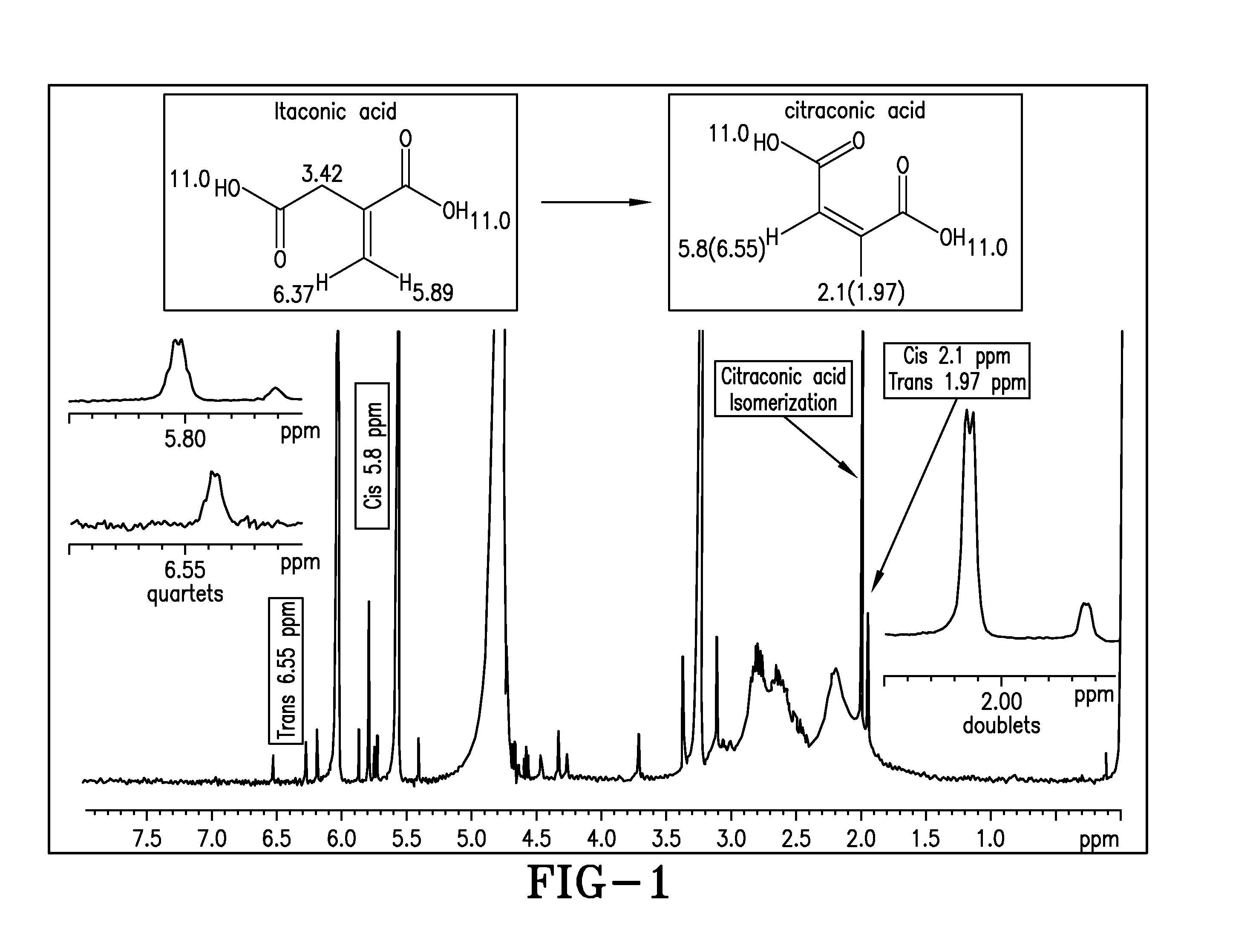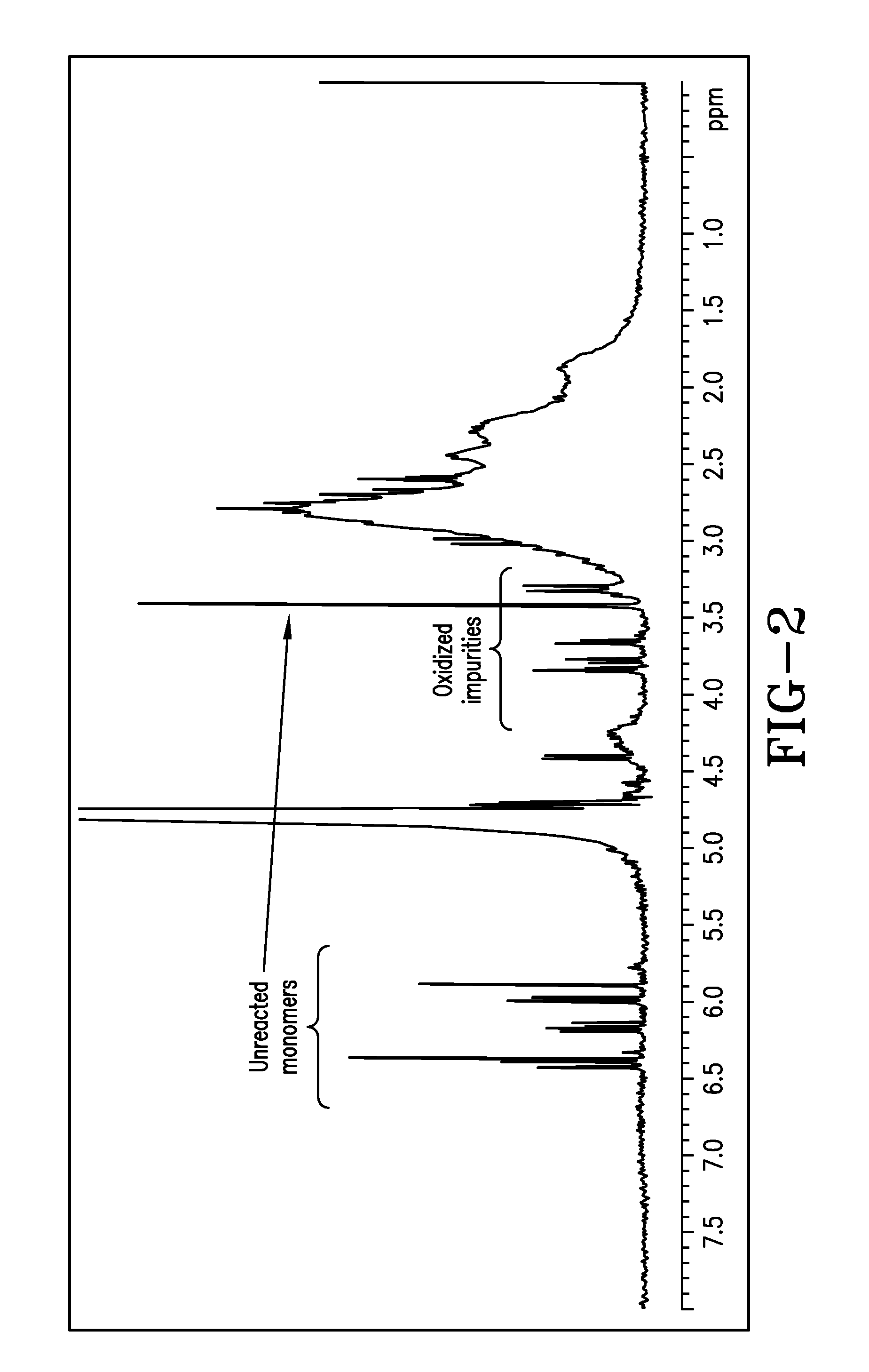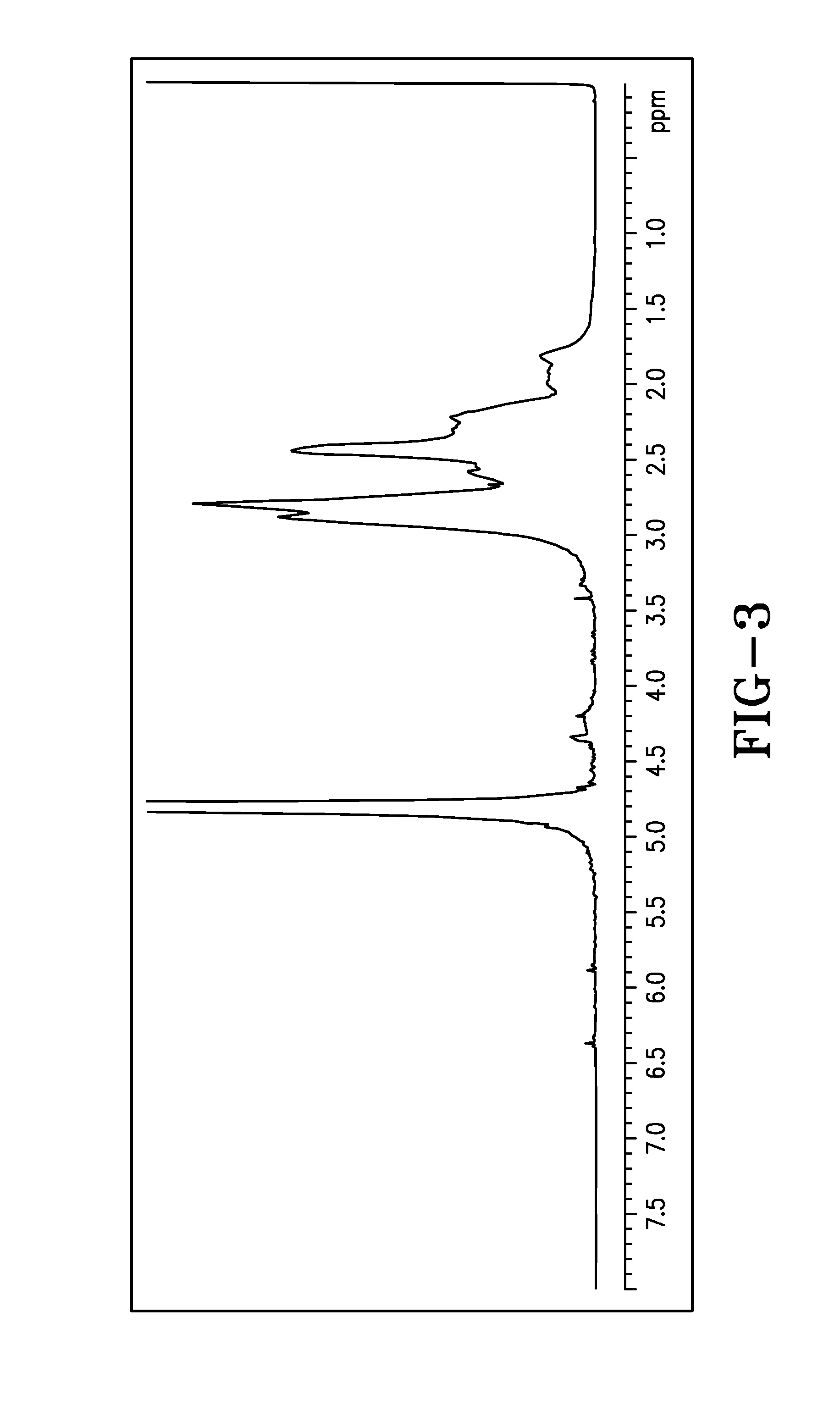Itaconic Acid Polymers
a technology of itaconic acid and polymer, applied in the field of itaconic acid polymers, can solve the problems of immediate product performance problems, reduced use, and unmet needs, and the loss of stpp as a builder
- Summary
- Abstract
- Description
- Claims
- Application Information
AI Technical Summary
Benefits of technology
Problems solved by technology
Method used
Image
Examples
example 1
[0251]Polymer Samples 1 to 4 and Comparative Sample I are characterized for % total solid, pH, product viscosity, conversion (by HPLC), and IA isomerization by 1H NMR. The results are shown in Table 1 below. A significant amount of citraconic acid (IA isomer) is noticed by the presence of cis- and trans-CH3-peak at 2.1 and 1.97 ppm and cis- and trans-methine —CH— peak at 5.8 and 6.55 ppm as shown in FIG. 1 in the Comparative Sample I as well as poor IA conversion. Samples 1-4 are markedly free of IA isomer with better conversion.
TABLE 1Polyitaconic acid made with differentpre-neutralized conditions (% DN)SampleTest1234Comp. I% DN05102050Temp ° C.85858585100pH2.62.212.733.54.85% Total Solids39.542.349.737.351Viscosity (mPa-s)7176134056540Residual11601850040502080045600Monomer (ppm)Cl2 Retention0.970.930.910.930.89Mn19171692219515641827PDI2.432.583.312.591.44Isomerizationnonenonenonetracesignificantby 1H NMR
Sample 5: 90 / 10 Mole % Itaconic Acid / Acrylic Acid Copolymer
[0252]Into an agita...
example 2
[0255]Polymer Samples 6 to 12 and Comparative Sample II are characterized for % total solid, pH, product viscosity, conversion and IA isomerization by 1H NMR. The results are shown in Table 2 below. The combination of both high initiator level and high temperature (reflux) conditions in the preparation of Comparative Sample II causes the initiator to decompose quickly, resulting in 1) a polymer solution having a dark color and undesirable sulfur odor, with oxidized and sulfurized itaconic acid impurities along with unreacted monomers (FIG. 2), and 2) poor performance for chlorine retention. Surprisingly, the combination of both lower temperature (<85° C.) and redox initiator (oxidizer-SPS and reducer-FF6) package employed in Samples 5 to 12 yields cosmetically acceptable color and odor, and relatively pure copolymer products (FIG. 3) with desirable Mn and other properties. Furthermore, the use of less than 5% equivalent pre-neutralization (referred to as DN) eliminates the hazardous...
example 3
[0272]The calcium binding capacities of the itaconic acid homo polymers at varying pH levels of 11.5, 9.5 and 8.5 were tested. Higher Ca binding numbers are preferred for chelation. The data shows pH plays a role in Ca binding capacities of the polymers. The improved polymers show comparable or improved performance to the comparative polymers and chelators.
[0273]Table 4 shows the Ca binding capacities of the improved polymers prepared at varying pH levels. Higher Ca binding capacities are preferred. The polymer of Sample 1 has better Ca binding capacity than commercial itaconic acid polymer CL6.
[0274]Table 5 shows the Ca binding capacities of IA-AA copolymers at pH 8.5, 9.5 and 11.5. Sample 5 has much higher binding capacities compared to the comparative sample II at pH 11.5.
[0275]Ca binding capacities of commercially available chelators are shown in Table 6.
[0276]The chelate precipitation behavior is markedly different depending on the polymer composition. The precipitate from the ...
PUM
| Property | Measurement | Unit |
|---|---|---|
| temperatures | aaaaa | aaaaa |
| temperature | aaaaa | aaaaa |
| temperature | aaaaa | aaaaa |
Abstract
Description
Claims
Application Information
 Login to View More
Login to View More - R&D
- Intellectual Property
- Life Sciences
- Materials
- Tech Scout
- Unparalleled Data Quality
- Higher Quality Content
- 60% Fewer Hallucinations
Browse by: Latest US Patents, China's latest patents, Technical Efficacy Thesaurus, Application Domain, Technology Topic, Popular Technical Reports.
© 2025 PatSnap. All rights reserved.Legal|Privacy policy|Modern Slavery Act Transparency Statement|Sitemap|About US| Contact US: help@patsnap.com



